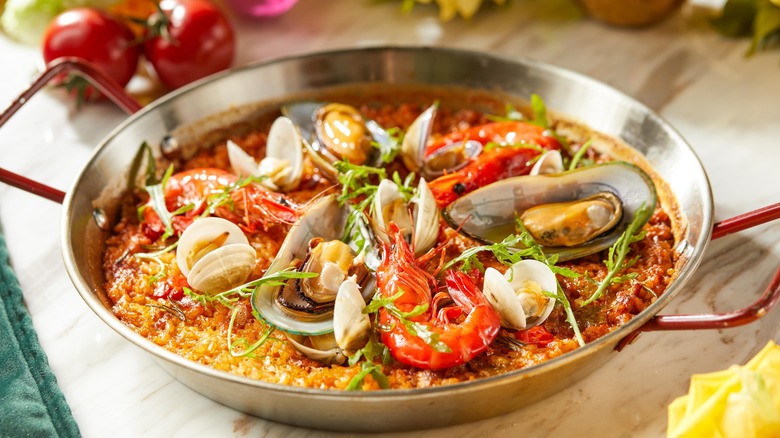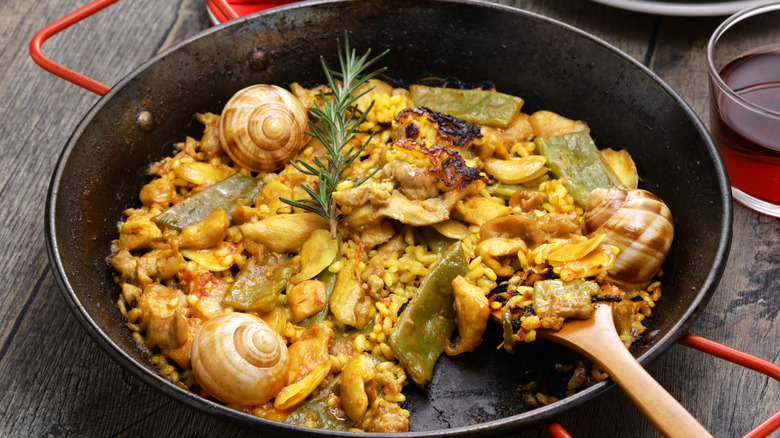Mistakes You Need To Avoid When Making Paella At Home
We may receive a commission on purchases made from links.
Of all the must-try Spanish dishes you'll want to get to know, paella is near the top of the list. This Spanish rice dish infused with saffron and stock often incorporates meat, seafood, and veggies in different variations. While that seems simple, there is an art to making paella well. Sergio Chamizo, executive chef at The National Hotel Miami Beach, gave Mashed some exclusive insight about mistakes we should avoid when making homemade paella.
First, Chamizo says to choose the right kind of rice. You may run into paella recipes that call for Arborio or long-grain rice. However, traditional paella is made with short- or medium-grain Spanish rice because of how its starch content absorbs liquid, which should also be measured carefully. "The ratio between the liquid and the rice is very important and should not be more than 3 part[s] of liquid for 1 part of rice," Chamizo explains.
In Spain, paella is a beloved cultural artifact. It's most often associated with Valencia and is believed to have originated with farmers in the 18th century. So naturally, there are many heated opinions about how to prepare it. But most paella enthusiasts can agree that Spanish rice makes a huge difference. If you can't find Spanish rice at your supermarket, search online for something like this Gourmanity Spanish paella rice, which has the protected designation of origin seal.
Caramelizing paella rice is a good thing
Sergio Chamizo also says not to skip out on that crispy, charred rice crust on the bottom of a well-made paella. This rice is not burned; it's called socarrat, which comes from the Spanish word "socarrar," meaning "to scorch." Like fond, those delicious bits of food stuck to the pan after cooking that we often use to make sauces, the socarrat is flavored by caramelization and the Maillard reaction. What you should know about the Maillard reaction is that this chemical process creates new flavors and aromas; essentially, it makes the food taste even better.
That's why Chamizo says to distribute the rice throughout the paella, but don't mix it after adding it to the pan. You may be tempted to stir it, but leaving it alone will help it develop the socarrat. "This rice caramelized with the fat from the other ingredients and adds another favored texture into the dish," Chamizo explains. Be sure you're using the right pan, preferably a paella (where the dish gets its name) like this Machika paella pan, but a shallow, wide-bottomed steel or aluminum skillet is a good alternative.
Remember, caramelized rice is not the same as burned rice, so be careful to watch the heat while you're cooking. If you accidentally burn the rice, Chamizo says it's best to toss it out and start all over. You may be eating a bit later than you planned, but at least you will enjoy the paella.

